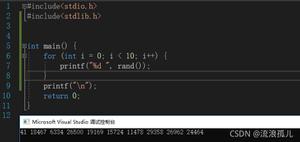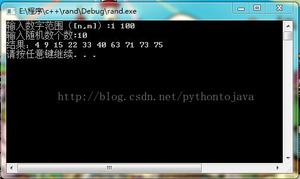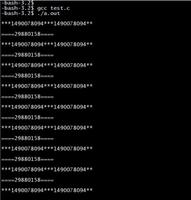Pytorch生成随机数Tensor的方法汇总
在使用PyTorch做实验时经常会用到生成随机数Tensor的方法,比如:
- torch.rand()
- torch.randn()
- torch.normal()
- torch.linespace()
均匀分布
torch.rand(*sizes, out=None) → Tensor
返回一个张量,包含了从区间[0, 1)的均匀分布中抽取的一组随机数。张量的形状由参数sizes定义。
参数:
sizes (int…) - 整数序列,定义了输出张量的形状
out (Tensor, optinal) - 结果张量
torch.rand(2, 3)
[[0.0836 0.6151 0.6958],
[0.6998 0.2560 0.0139]]
[torch.FloatTensor of size 2x3]
标准正态分布
torch.randn(*sizes, out=None) → Tensor
返回一个张量,包含了从标准正态分布(均值为0,方差为1,即高斯白噪声)中抽取的一组随机数。张量的形状由参数sizes定义。
参数:
sizes (int…) - 整数序列,定义了输出张量的形状
out (Tensor, optinal) - 结果张量
torch.randn(2, 3)
0.5419 0.1594 -0.0413
-2.7937 0.9534 0.4561
[torch.FloatTensor of size 2x3]
离散正态分布
torch.normal(means, std, out=None) → → Tensor
返回一个张量,包含了从指定均值means和标准差std的离散正态分布中抽取的一组随机数。
标准差std是一个张量,包含每个输出元素相关的正态分布标准差。
参数:
means (float, optional) - 均值
std (Tensor) - 标准差
out (Tensor) - 输出张量
torch.normal(mean=0.5, std=torch.arange(1, 6))
-0.1505
-1.2949
-4.4880
-0.5697
-0.8996
[torch.FloatTensor of size 5]
线性间距向量
torch.linspace(start, end, steps=100, out=None) → Tensor
返回一个1维张量,包含在区间start和end上均匀间隔的step个点。
输出张量的长度由steps决定。
参数:
start (float) - 区间的起始点
end (float) - 区间的终点
steps (int) - 在start和end间生成的样本数
out (Tensor, optional) - 结果张量
torch.linspace(3, 10, steps=5)
3.0000
4.7500
6.5000
8.2500
10.0000
[torch.FloatTensor of size 5]
到此这篇关于Pytorch生成随机数Tensor的方法汇总的文章就介绍到这了,更多相关Pytorch生成随机数Tensor内容请搜索以前的文章或继续浏览下面的相关文章希望大家以后多多支持!
以上是 Pytorch生成随机数Tensor的方法汇总 的全部内容, 来源链接: utcz.com/z/339032.html







